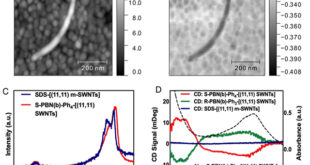Heteroatom Chemistry, Volume 24, Issue 2, pages 131–137, 2013.
Tsutomu Kimura, Takahiro Tsuru, Hitoshi Momochi, Tsuyoshi Satoh.
Department of Chemistry, Faculty of Science, Tokyo University of Science, Tokyo, Japan and
Graduate School of Chemical Sciences and Technology, Tokyo University of Science, Tokyo, Japan.
Abstract
Racemization of optically active dichloromethyl p-tolyl sulfoxide took place at −78°C in the presence of potassium bis(trimethylsilyl)amide (KHMDS), while the same racemization did not occur under reflux in toluene in the absence of KHMDS. Density functional theory calculations suggested that the pyramidal inversion at the sulfur center was unlikely to be involved in the racemization mechanism. An anionic species of the sulfoxide was found to be gradually converted into chlorobis(p-tolylsulfinyl)methane and dichlorocarbene. We propose a racemization mechanism mediated by achiral potassium p-toluenesulfenate and chloro(p-tolylsulfinyl)methylene. © 2013 Wiley Periodicals, Inc. Heteroatom Chem 24:131–137, 2013; View this article online at wileyonlinelibrary.com. DOI 10.1002/hc.21074
© 2013 Wiley Periodicals, Inc.
 Advances in Engineering Advances in Engineering features breaking research judged by Advances in Engineering advisory team to be of key importance in the Engineering field. Papers are selected from over 10,000 published each week from most peer reviewed journals.
Advances in Engineering Advances in Engineering features breaking research judged by Advances in Engineering advisory team to be of key importance in the Engineering field. Papers are selected from over 10,000 published each week from most peer reviewed journals.


